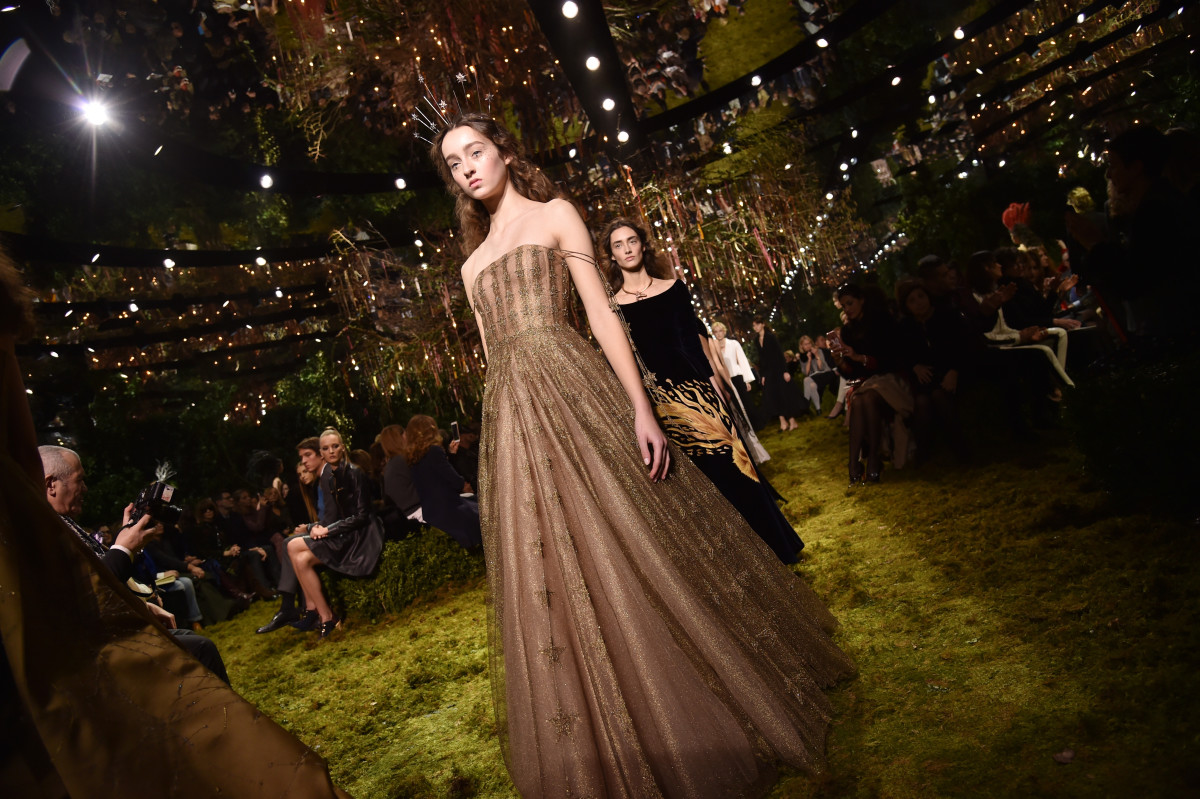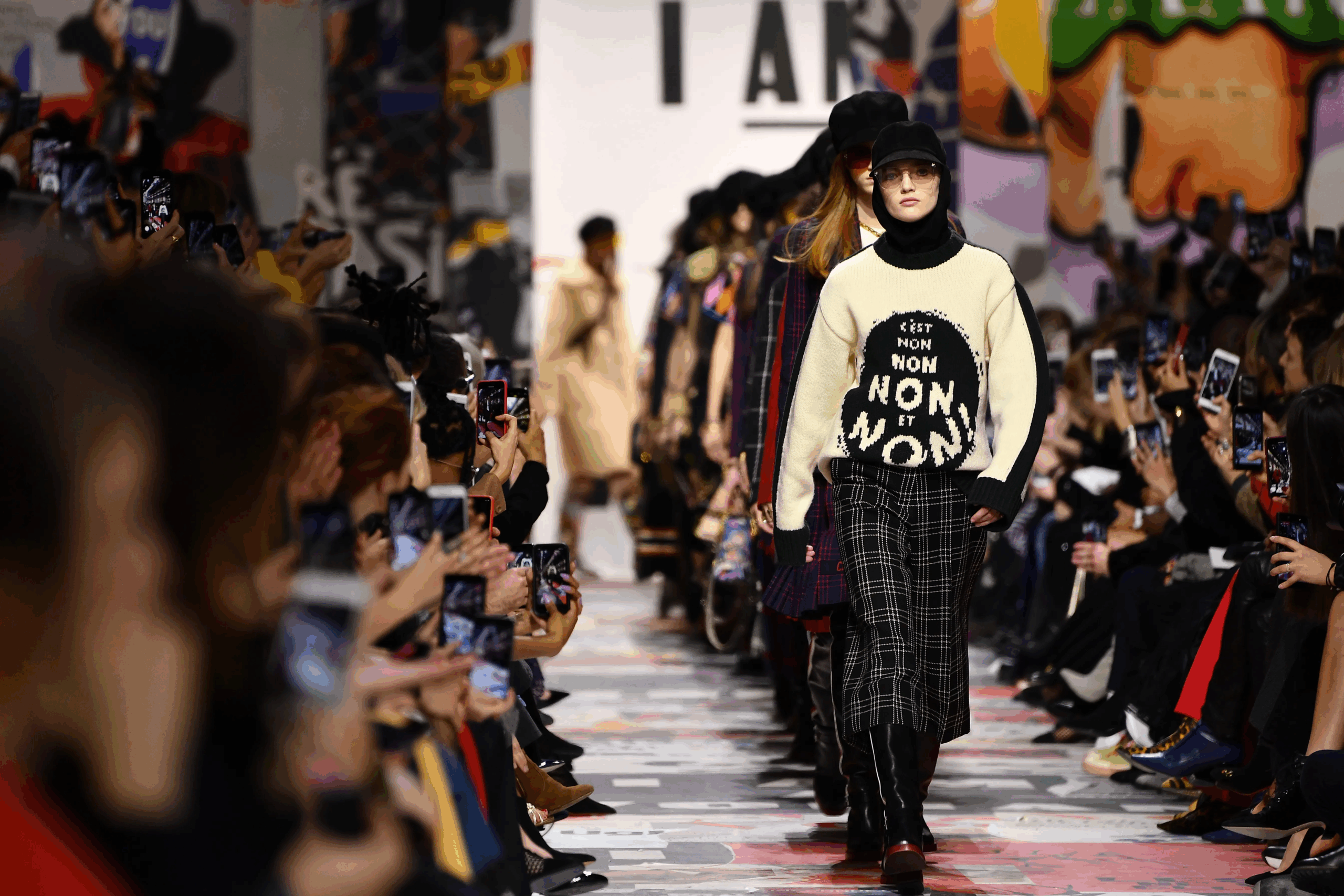
Style Companion
Behind Dior’s Feminist Wave: The Legacy of Rachele Regini
by Thea Elle | Aug., 01, 2025 | Arts & Culture
When Maria Grazia Chiuri became DIOR’s first female creative director in 2016, she didn’t just change how the maison dressed women—she changed how it spoke to them. Her collections featured slogan tees, goddess silhouettes, and bold female symbolism. But while Chiuri became the public face of feminist fashion at DIOR, there was another voice helping shape the message from behind the scenes: her daughter, Rachele Regini.
Rarely photographed and barely quoted, Regini worked quietly as DIOR’s cultural advisor. But her influence was anything but minor. With an academic background in gender studies and a sharp eye for cultural storytelling, she helped steer the brand’s most thoughtful collaborations and feminist narratives. As Chiuri steps down, the question isn’t just who will replace her on the runway—but who, if anyone, will continue the vision she and Regini built together.

She Brought Vision, Not Just Style, to DIOR
Maria Grazia Chiuri didn’t just break DIOR’s glass ceiling — she embroidered a manifesto on it. Born in Rome in 1964 to a seamstress mother, Chiuri grew up with fashion as a second language. After studying at the Istituto Europeo di Design, she cut her teeth at FENDI, where she helped launch the now-iconic Baguette bag, and later at Valentino, co-leading a dreamy, lace-drenched revival with Pierpaolo Piccioli. But it was her 2016 appointment as DIOR’s first-ever female creative director that turned her into something more than a designer. From the moment her models walked out in “We Should All Be Feminists” tees, Chiuri made it clear: she wasn’t just dressing women — she was talking to them.
Her collections at DIOR weren’t just about silhouettes, but signals. She pulled from female artists, thinkers, and dancers, infusing haute couture with protest posters and poetry. Not everyone loved it. Some called it performative, others praised it as overdue. But Chiuri’s point was less about being universally liked and more about being unmistakably heard. Fashion, under her direction, became a medium for dialogue — one that asked who gets to define femininity, power, and beauty. And though she stood at the front of the house, she wasn’t doing the thinking alone. Just behind the scenes was her daughter, Rachele Regini — not only a quiet influence, but DIOR’s official cultural adviser. And her fingerprint is all over the brand’s most ideological turns.
The Shirt Heard Around the World
In her very first show for DIOR, Maria Grazia Chiuri didn’t just introduce a new silhouette — she introduced a stance. The Spring/Summer 2017 collection opened with structured fencing jackets and ethereal sheer skirts, nodding to strength and softness in equal measure. But it was a simple white cotton T-shirt that captured the world’s attention. Emblazoned with the now-iconic phrase “We Should All Be Feminists,” borrowed from writer Chimamanda Ngozi Adichie, the shirt became an instant headline-maker. It wasn’t just fashion; it was a declaration. A manifesto disguised as merch. And in the rarefied world of haute couture, it was a radical move — a luxury house embracing slogan-wear not as a moment of irony or rebellion, but as a clear ideological stance.
Critics were quick to weigh in. Was it a bold statement or a branding exercise? A genuine call for change or just savvy marketing cloaked in activism? But Chiuri stood firm. For her, the message wasn’t about wrapping politics in tulle — it was about planting ideas in the cultural conversation, using fashion as a vehicle for discourse. She knew that a runway show couldn’t dismantle patriarchy, but it could nudge the industry — and its audience — in a new direction. The shirt sold out almost instantly. The quote went viral. And DIOR, once synonymous with cinched waists and post-war femininity, found itself pulsing with contemporary relevance.

Maria Grazia Chiuri brought depth to DIOR’s runways, blending bold fashion with meaningful messages.
From Catwalk to Consciousness
If the T-shirt sparked the conversation, the Divine Feminine set made sure we stayed in it. For DIOR’s Spring 2020 couture show, Chiuri teamed up with legendary feminist artist Judy Chicago to create a runway installation that felt more like a temple than a tent. Held at the Musée Rodin, the show took place inside a soaring, womb-like structure stitched from fabric and filled with embroidered banners asking pointed questions like, “What if women ruled the world?” Subtle? Not even close. Effective? Absolutely.
Models walked through the space like priestesses, draped in goddess gowns and power silks. But the real power came from the messaging: Chiuri wasn’t just decorating the runway — she was using it as a platform for institutional critique. In a world where “feminist fashion” often stops at a screen-printed slogan, this was high-concept, high-effort, and unapologetically cerebral. It was the rare couture show where you walked away thinking less about the price tags and more about the patriarchy. That alone felt revolutionary.

At DIOR, Maria Grazia Chiuri reimagined the runway as a place for modern elegance and forward-thinking design.
More Than a Moodboard: The Legacy They Built
What made Chiuri’s feminism at DIOR more than a passing trend was how deeply — and consistently — it was woven into the brand’s identity. This wasn’t about one season’s theme. It was about reshaping the maison’s core values. Year after year, show after show, Chiuri made it clear that beauty and brains weren’t mutually exclusive. Under her direction, DIOR stopped selling just clothes and started selling a point of view — one that challenged who fashion is for, what it can say, and how it can mean more.
Behind that intellectual sharpness was Rachele Regini, whose influence helped give Chiuri’s feminism not just visibility, but teeth. Together, they formed an unlikely but quietly radical duo: a designer-mother with power on the runway, and a theorist-daughter shaping the ideas behind it. While other brands were still testing the waters with #empowerment, DIOR made it policy. And whether or not every slogan landed, the message was loud and clear — this house was no longer dressing women just for the male gaze. It was dressing them for themselves.
After Chiuri. What Happens to a Feminist House Without Its Feminist?
As Chiuri prepares to step down from DIOR, the question is not just who will fill her shoes. It is whether anyone will carry the same conviction. For all the critiques of her sometimes literal approach to feminism, Chiuri gave the brand a heartbeat. She expanded the definition of power dressing. She made intellect part of the aesthetic. And she proved that a major luxury house could take a stand, even if it made people uncomfortable.
What happens now? Rumors swirl about her next move. Could it be her own label? A return to VALENTINO? Something completely unexpected? And what about Rachele Regini, the quiet force behind the messaging? Her next chapter may not be in design, but her impact on fashion discourse is just beginning. As for DIOR, the brand faces a choice. Keep the feminism baked in, or treat it like a passing trend. Either way, the bar has been raised. The runway will not forget what Chiuri built. And neither will the women who finally felt seen while walking it.

Chiuri’s DIOR runways blended mythic beauty with intellectual edge, where every look carried both style and a statement.
The Final Stitch
Maria Grazia Chiuri didn’t just make clothes. She made a case. That a luxury house could have values. That fashion could be political without losing its beauty. That femininity could be strong, sharp, and self-defined. With Rachele Regini helping shape the message, DIOR became more than a label. It became a lens.
Whether the next era of DIOR will double down or backtrack remains to be seen. But one thing is clear. Chiuri did not whisper her point of view. She embroidered it. Now the industry has to decide if it will keep listening, or simply move on to the next trend.
